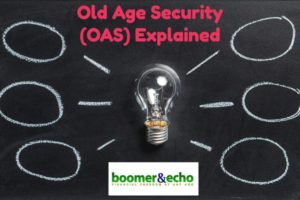
Here’s my latest MoneySense column, which looks at the headline-grabbing “news” that an Enhanced Canada Pension Plan (CPP) would mean roughly 243,000 low-income seniors might not be eligible for the Guaranteed Income Supplement (GIS) once the full-bore enhanced CPP system is in place in the year 2060.
Click on the highlighted headline for the full piece: Retirees should be happy not to qualify for GIS.
None of the five financial experts whose input appears in the piece disagreed with this article’s premise: that far from being a bad thing to make so much from CPP (or any other source of retirement income) that you exceed GIS minimum income thresholds, it’s actually a good thing. Yes, you have to work at a job to earn CPP benefits, whether “enhanced” or not, and yes, this entails payroll contributions taken off the top. That’s no different than anyone with a good employer pension or who saves in RRSPs or any other vehicles.
That’s what saving is all about: providing for future needs by taking a little out of current income. It’s all about living within your means, being responsible for your own future and all the other themes that the Financial Independence Hub espouses every day.
The Hub and MoneySense recently looked in-depth at OAS and the GIS, which you can find here. And earlier today we looked at Survivor benefits for CPP, OAS, GIS and other sources of retirement income.
One of the sources for the GIS article was TriDelta Financial’s wealth advisor, Matthew Ardrey. Time and space limitations meant we could include only a snippet of Matthew’s analysis in the MoneySense column itself but he has given us permission to run his whole opinion below:

The government plans to enhance CPP through two measures. One, increasing the contribution amount from 25% to 33% and two by increasing the income limit on which contributions are made to $82,700. Combined these two measures will take the maximum pension of $13,370 today to about $20,000 in the future.
There will be some measures to offset these contributions for the employee including an enhanced Working Income Tax Benefit (WTIB) to help offset the cost for lower income workers and making the enhanced contributions a tax deduction instead of a tax credit. Though that helps out today it does nothing for the low-income earner in retirement.
Continue Reading…






